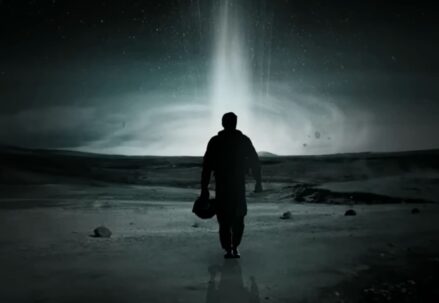The editor of ‘The Secrets Of The Universe’, holding a Master’s in Physics from Punjab, India, and currently engaged in doctoral research on Radio Emissions of Exoplanets in Barcelona, Spain, shares a passion for writing about an array of topics in planetary sciences, observational astrophysics, quantum mechanics, atomic physics, and the evolving space industry.
The Dynamic Universe: Beyond the Serene Night Sky
Gazing at the night sky, one might be easily captivated by its apparent stillness and uniformity, with stars twinkling gently against the vast cosmic canvas. This tranquil scene, however, belies a universe teeming with dynamic and cataclysmic events, a realm where tranquility is interspersed with episodes of violent transformations and stellar fireworks. The night sky’s calm appearance is merely a veil over a universe in constant flux, where stars undergo dramatic life cycles, from birth to explosive demise.
In the 19th installment of the “Basics of Astrophysics” series, the editor embarks on an exploration of two of the most dramatic and energetic events in the cosmos: Novae and Supernovae. These phenomena stand as a testament to the universe’s inherent dynamism and complexity, challenging the notion of a peaceful starlit sky. Novae, with their sudden and brilliant outbursts, and supernovae, with their awe-inspiring, galaxy-outshining explosions, serve as crucial agents in the cosmic narrative. They are not merely isolated spectacles but key players in the story of stellar evolution, contributing to the enrichment and diversity of the universe.
The article aims to demystify these celestial events, shedding light on their causes, mechanisms, and aftermath. By delving into the intricate details of these stellar explosions, the editor seeks to provide readers with a deeper understanding of the forces and processes shaping the universe. This exploration into Novae and Supernovae reveals a cosmos far more dynamic and interconnected than what meets the eye, where every twinkling star is a potential site for future cosmic fireworks.
The Distinct Nature of Novae and Supernovae
While the terms novae and supernovae are frequently interchanged, they describe significantly different astronomical phenomena. A nova is an event where a star experiences a temporary increase in brightness, followed by a gradual return to its initial luminosity over a period that can span weeks or months. This increase in brightness is typically caused by a thermonuclear explosion on the surface of a white dwarf star, which has accreted material from a companion star in a binary system. The explosion is not destructive enough to disintegrate the white dwarf, allowing it to return to its pre-nova state after the event.
On the other hand, a supernova is a more cataclysmic event, marking the end of a star’s life. It is characterized by a massive explosion that results in the star shining as brightly as an entire galaxy for a short period. Unlike novae, supernovae can completely obliterate the star, leaving behind either a neutron star or a black hole, depending on the original star’s mass. This process plays a crucial role in the cosmic cycle, as supernovae scatter heavy elements into space, contributing to the formation of new stars and planets.
Understanding the distinction between these two phenomena is fundamental for astronomers. While both events involve brightening stars, their causes, scales, and outcomes are vastly different. Novae are relatively common and less destructive, whereas supernovae are rarer and have a significant impact on their surrounding environment. This article aims to explore these differences in depth, providing a clearer understanding of these fascinating cosmic events and their roles in the vast expanse of the universe.
Supernovae: A Spectral Analysis
Supernovae are primarily categorized based on their emitted spectra. If hydrogen lines are present, the supernova is classified as Type II; if not, it falls under Type I. The article first explores Type II supernovae, laying a foundation to better understand Type I supernovae subsequently.
Type II Supernovae: Hydrogen and Galactic Positioning
Characterized by hydrogen lines in their spectra, Type II supernovae usually occur in spiral arms of galaxies and H II regions but are absent in elliptical galaxies. These supernovae originate from stars significantly heavier than the sun, around 8 to 15 times its mass. The article recalls previous discussions on nuclear reactions in stars, explaining how massive stars progress through fusion stages, eventually collapsing under their own gravity when fusion becomes unsustainable.
The Aftermath of Type II Supernovae
Following the gravitational collapse, the outer layers of a massive star implode with incredible speed, nearly a significant fraction of the speed of light. This inward rush of material eventually hits the star’s core, which has already undergone an intense compression. The core, unable to compress further due to neutron degeneracy pressure, causes the in-falling material to rebound outward in a violent explosion, triggering what is known as a Type II supernova. This explosion is not only spectacular to witness but also plays a pivotal role in the cosmic cycle of star birth and death.
The aftermath of a Type II supernova leaves behind a remnant core, whose fate is determined by its mass. If the core’s mass is less than about 2 or 3 times that of our Sun, it becomes a neutron star. Neutron stars are incredibly dense, often packing more than the mass of the Sun into a sphere just a few kilometers in diameter. They represent the densest form of matter in a stable state in our universe.
If the remnant core exceeds this critical mass, even the neutron degeneracy pressure is insufficient to halt the collapse. The core continues to collapse into an even more extreme and enigmatic object—a black hole. Black holes represent a state of matter where the gravitational pull is so strong that not even light can escape from it. These remnants of Type II supernovae are often the site of intense study, as they provide unique laboratories for understanding the laws of physics under extreme conditions.
This process of core collapse and subsequent explosion is not only a dramatic end to a star’s life but also a key mechanism for dispersing elements throughout the galaxy. The supernova explosion ejects heavy elements, synthesized during the star’s life and in the explosion itself, into the interstellar medium. This enriches the galactic environment, paving the way for the formation of new stars and planets, and contributing to the chemical complexity seen throughout the universe.
Type I Supernovae: A Subdivision Analysis
Type I supernovae, lacking hydrogen lines, are subdivided into Type Ia, Ib, and Ic.
Type Ia Supernovae: Binary Systems and White Dwarfs
These occur in binary star systems, involving a white dwarf and a companion star, which could be a red giant, another white dwarf, or a main-sequence star. Type Ia supernovae are linked to a white dwarf reigniting after a dormant period, typically triggered by accumulating hydrogen from its companion.
Types Ib and Ic: Core-Collapse Variants
Similar to Type II supernovae in their core-collapse nature, Types Ib and Ic differ significantly due to the loss of most of their hydrogen envelopes, which results in the absence of hydrogen lines in their spectra. This loss is typically a consequence of strong stellar winds or material being stripped away by a companion star in a binary system. In addition to the lack of hydrogen, Type Ib supernovae are characterized by the presence of helium lines, while Type Ic supernovae show neither hydrogen nor helium lines. These variations in their spectral characteristics are indicative of the different evolutionary paths and compositions of the progenitor stars. Type Ic supernovae, in particular, are often linked to very massive stars that have lost not only their hydrogen layers but also their outer helium layers, possibly due to interactions in a binary system. The study of these types of supernovae provides crucial insights into the life cycles of massive stars and the processes that lead to their dramatic end stages. Understanding these differences enriches our comprehension of the complex and varied nature of stellar evolution in the cosmos.
Novae: The Brief Brilliance of New Stars
Novae, meaning “new stars” in Latin, briefly outshine as one of the brightest objects in the sky before fading. These events are marked by a characteristic silicon absorption feature and can eject material at immense speeds.
Author’s Insight on Supernovae and Novae
The study of supernovae and novae offers profound insights into a star’s lifecycle, contributing to the understanding of element formation, including heavy elements like gold and uranium. The ejected material enriches the interstellar medium, fostering the birth of new stars and planets. Particularly, Type Ia supernovae serve as standard candles for measuring galactic distances. Through this exploration, the article aims to provide a foundational understanding of these phenomenal cosmic events, underscoring their significance in unraveling the universe’s grandest secrets.





